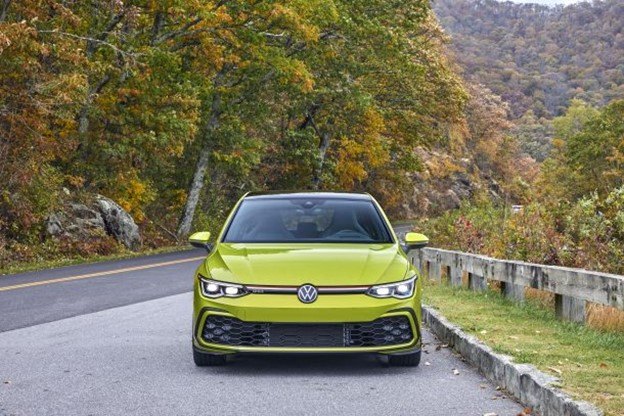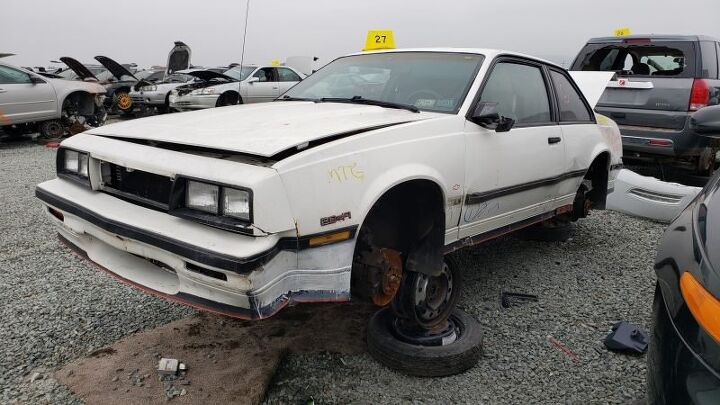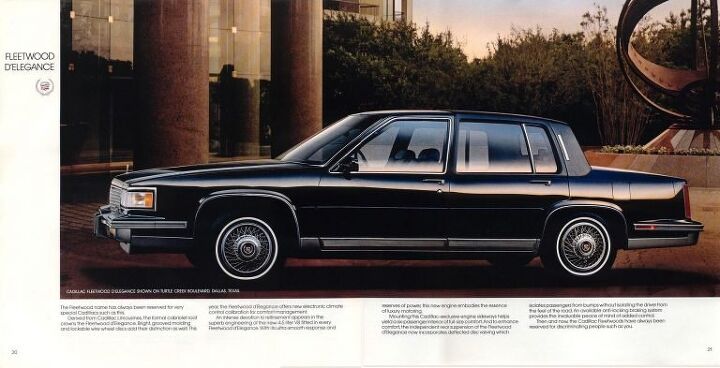#gm
2022's Top 5 Future ICE Age Classics (Plus 1 Bonus Pick)
Just about every automaker has committed itself to going “all-electric” at some point in the next decade, and whether you think that’s a good thing or a bad thing, it means that the internal combustion engine (“ICE”, for the purposes of this article) is dead tech walking. Death and discontinuation are usually one-way tickets to the scrap heap for cars – but some cars are different. Some cars are special, and being made rare or obsolete just makes them more appealing.
The Great Jack Baruth once called this The Grand National Problem, and I think there are a few ICE cars out there that will be more appealing to car guys and gals than others in 20- or 30-years’ time. As such, I’ve taken some time to look at the automotive class of 2022 and pick my 5 future ICE Age Classics. Enjoy!
GM Introducing New Premium Import Brand for China
General Motors is plotting to create a new premium brand for the Chinese market comprised primarily of halo cars shipped in from the United States. Details are scant at the moment, primarily due to GM getting caught with its pants down on the news breaking. The automaker doesn’t appear to have reached the point where it feels comfortable sharing. But Chinese media has been sharing the story for several days, forcing the company to issue an official statement confirming that it’s true.
GM Dumps Lordstown Motors
Lordstown Motors has gone from the savior of Ohio to just another blowhard electric vehicle startup. Last year, it became the focus of investment research firm Hindenburg Research and an incredibly damning report that accused the company of fraudulent behavior. The paper cited thousands of non-binding, no-deposit orders and was proven right a few months later when the startup announced it didn’t actually have enough money to commence commercial production. By June, Lordstown was under investigation and losing top-ranking executive with nothing to show for itself other than a factory it purchased from General Motors at a discount where it installed a pointless solar panel array. The company said it would be selling the plant to Foxconn Technology Group (Hon Hai Technology Group) in October, along with $50 million in stock, with the plan being to make the Taiwanese firm a contract assembler for the Lordstown Endurance pickup.
It’s going to need that money too because GM is severing ties with the startup and has confirmed it offloaded its remaining stock over the holidays. While the Detroit-based automaker only held about $7.5 million worth of shares, it still represented about 5 percent of Lordstown and continued support of a business that looked to be foundering.
Russia-Ukraine War Adding to Supply Problems, Auto Industry Reinventing Itself
Volkswagen Group has stalled production in Germany, citing an inability to obtain sufficient parts from Ukraine. The automaker reportedly is lacking sufficient electrical components for its Zwickau-Mosel plant and the Dresden-based “Transparent Factory” — both of which are responsible for manufacturing VW and Audi-branded electric vehicles.
While the automaker declined to identify any specific suppliers, it said that Zwickau-Mosel will be down for at least four days as the Dresden facility will only need three days of downtime. That should put them both back online by the end of the week. But that’s hardly a guarantee and problems abound elsewhere, some of which are starting to feel borderline ordinary, as the industry continues reinventing itself.
Junkyard Find: 1987 Chevrolet Cavalier Z24 Sport Coupe
Abandoned History: General Motors' High Technology Engine, and Other CAFE Foibles (Part IV)
We return to the saga of GM’s High Technology engine today, after taking a diesel detour in our last entry. Concurrent in the High Technology engine’s timeline, the Oldsmobile diesel’s failure was quick, but certainly not painless. It put the majority of American consumers off the idea of a passenger car equipped with a diesel engine. And by the time GM pulled the diesel from its various brand lineups, there was a strategy change over in HT4100 land: Not calling the engine HT anymore.
Opinion: The New York Times Needs to Get Autonomous Driving Terminology Right
The New York Times often gets unfairly criticized, usually by readers who have their own political biases (right and left), but sometimes the criticism lobbed its way is not only very fair, but accurate.
And when it comes to autonomous driving, the vaunted Times has stepped in it, big time.
Abandoned History: General Motors' High Technology Engine, and Other CAFE Foibles (Part III)
In today’s edition of Abandoned History, we return once more to the late Seventies engines of General Motors. After the disaster which was the V8-6-4 and the subsequent release of the quite flawed HT4100 V8, we take a sidestep today into diesel. Time for a turn with the cost-cut cast iron Oldsmobile oil burner that accompanied the troubled gasoline engines at GM dealerships across the country.
Setting the Stage? Mexican Auto Employees Elect Independent Union
When the United States-Mexico-Canada Agreement (USMCA) was being floated as a possible replacement for the North American Free Trade Agreement (NAFTA), one of the biggest selling points was the inclusion of new labor protections for Mexican workers. The Trump administration wanted to ensure serious labor reform took place south of the border to ensure union business was conducted responsibly and wages would increase. As a byproduct, USMCA is supposed to encourage North American synergies while gradually discouraging U.S. businesses from blindly sending jobs to Mexico to capitalize on poverty tier wages.
That theory will now be tested in earnest after General Motors employees from the Silao full-size truck plant voted overwhelmingly to dump the Confederation of Mexican Workers (CTM) for the Independent Syndicate of National Workers (SINTTIA).
Industry Braces for Increased Volumes, Lower-Margin Vehicles
It’s a little early in the year to say anything definitive about 2022 vehicle volumes, however, the automotive industry has been signaling that production numbers should begin to rise in the coming months. While that sentence should be cause for a sigh of relief, there are parts of the industry that might not feel as good about it as you probably do.
With supply chain problems having drastically limited vehicle production during the pandemic, many dealers opted to price their goods well above anything that could be considered normal. This worked out poorly for many of the smaller outfits as larger retailers enjoyed record-breaking profits in 2021. Some manufacturers also benefited financially, as the chip shortage allowed them to prioritize their highest-margin products. Unfortunately for them, 2022 is likely to bring affordable vehicles back into play and gradually pull pricing closer to something approaching normality.
Stellantis Makes Decision on Vaccine, Truckers Head to Ottawa
Following the U.S. Supreme Court’s decision to block proposed OSHA regulations backed by the Biden administration, it was assumed that automakers would quickly begin weighing in on vaccine rules now that there would be no federal obligation. However, they’ve actually been keeping quiet on the matter, with Stellantis being the first manufacturer to walk back previous requirements.
While the automaker had previously been working up to companywide vaccine mandates, it pushed back its vaccine deadline for early January. This week, Stellantis confirmed that it will be abandoning the scheme entirely after suggesting that the existing compliance rates were sufficient. Though something tells me that executives have become aware of the swelling pushback against COVID restrictions and became concerned with the optics.
White House Invites Auto Execs to Endorse Build Back Better
The White House has made plans to host American business executives — including numerous CEOs tied to the automotive sector — in an effort to gain support for the stalled Build Back Better agenda. The meeting is scheduled to take place today, with President Joe Biden and company hoping to convince them to get behind the (revised) $1.75 trillion spending bill after it passed in the House but never made it through the Senate.
Seats have already been reserved for General Motors CEO Mary Barra, Ford CEO Jim Farley, and Cummins CEO Tom Linebarger. The rest are going to heads of manufacturing and technology companies, with a few noteworthy outliers. For example, the Biden administration has also invited the president of the Teachers Insurance and Annuity Association of America and the CEO of Siemens (a multinational entity that’s not based in the United States). Based on earlier statements from White House press secretary Jen Psaki, the meetings will take place in-person, bucking the Biden administration’s trend of hosting virtual events.
Abandoned History: General Motors' High Technology Engine, and Other CAFE Foibles (Part II)
In our last edition of Abandoned History, we covered the years leading up to the release of the Cadillac High Technology V8. Used almost exclusively in 1981, the disastrous V8-6-4 had a primitive engine management system that could deactivate either two or four cylinders on Cadillac’s traditional V8. And while the idea was sound, the technology and engineering behind it were not. Cadillac was left in a bind and needed a replacement engine immediately. But the engine of choice was not finished, and not ready for primetime. Ladies and gentlemen, welcome the medium-rare HT4100.
Rare Rides: The 1958 Buick Limited Lineup, a Very Expensive Roadmaster
Today’s Rare Ride was a single-year offering at Buick; it came and went in 1958. As General Motors reworked its large car offerings that year in response to styling changes at one of its biggest competitors, it reintroduced a historical nameplate at Buick: Limited.
Abandoned History: General Motors' High Technology Engine, and Other CAFE Foibles (Part I)
A modern and efficient V8 of 4.1 liters, the HT4100 was the exciting way forward for Cadillac’s propulsion needs in the early Eighties. The engine came hot on the tail of a very iffy cylinder deactivation experiment, V8-6-4. Unfortunately, just like the cylinder games before and the Northstar after, the HT was plagued with issues that took years to iron out. The HT in its name meant High Technology but could’ve meant Halfway There. Let’s travel back to the Seventies and talk cylinders.






























Recent Comments